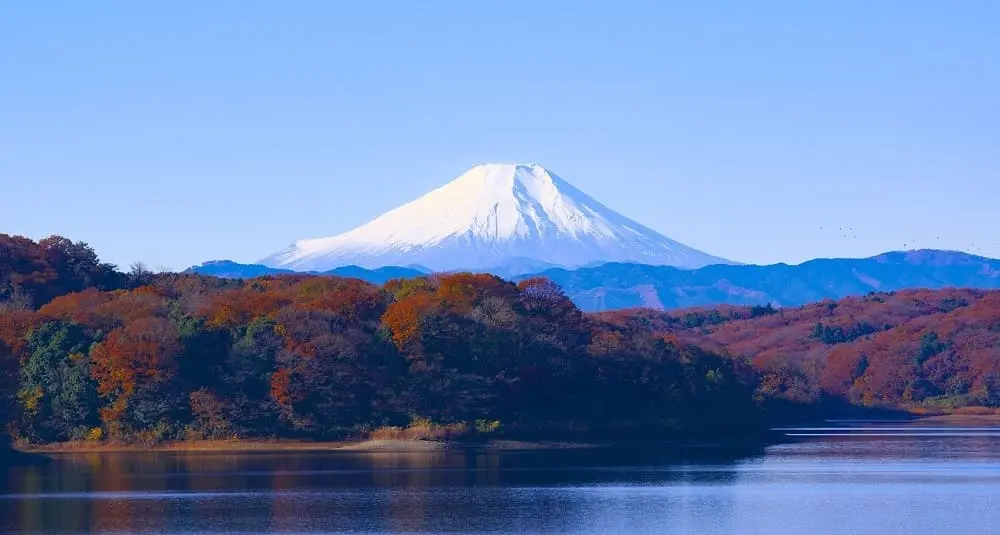Where is Mount Fuji?
Last Updated:
Mount Fuji, or Fujisan in Japanese, is Japan’s highest peak, culminating at 3,776 meters. Located on the main island of Honshū, it lies some 100 km southwest of Tokyo, straddling the prefectures of Shizuoka and Yamanashi.
This stratovolcano, characterized by its almost perfect conical shape, is a national symbol and a sacred site in Japanese culture. It is often depicted in art and literature, testifying to its cultural and spiritual importance. Mount Fuji has also been a place of pilgrimage for centuries, attracting visitors from all over the world eager to admire its beauty and attempt its ascent.
The mountain is surrounded by five lakes, known as Fuji Goko: Kawaguchi, Yamanaka, Sai, Motosu and Shōji. These lakes offer spectacular panoramic views of Mount Fuji and are popular destinations for outdoor activities such as fishing, camping and boating.
Mount Fuji is part of Fuji-Hakone-Izu National Park, a region that also includes hot springs, volcanic islands and picturesque coastal areas. This geographical diversity makes it a major tourist destination, offering a multitude of recreational and cultural activities.
Climbing Mount Fuji is a popular experience, particularly during the official climbing season, which generally runs from early July to early September. Several trails lead to the summit, each offering unique perspectives and varying levels of difficulty. Hikers are advised to be well prepared, taking into account changing weather conditions and altitude.
In 2013, Mount Fuji was inscribed on UNESCO’s World Heritage List as a cultural site, in recognition of its artistic, spiritual and historical importance. This recognition underlines Mount Fuji’s importance not only as a natural wonder, but also as a source of inspiration for generations of artists and poets.
Despite its serene beauty, Mount Fuji is an active volcano, although it last erupted in 1707-1708. Scientists regularly monitor its activity for any signs of potential reawakening. Local authorities have emergency plans in place to ensure the safety of residents and visitors in the event of another eruption.
Mount Fuji is also a popular place for astronomical observation, due to the clarity of the sky at its summit. Observatories have been set up to study the stars and atmospheric phenomena. However, difficult climatic conditions limit access to these facilities for much of the year.
Mount Fuji is much more than just a mountain. It embodies the very essence of Japan, combining natural beauty with cultural and spiritual significance. Its majestic presence continues to inspire and attract millions of people, making it a national treasure and a universally recognized symbol.
You may also be interested in
geography

Where is Mount Fuji?
Answer
Mount Fuji, Japan's highest point at 3,776 meters, is an iconic volcano located on the island of Honshū, about 100 km southwest of Tokyo.